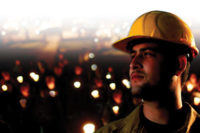This is a stretch, of course. But the NYT piece is troublesome. “Now if a company still has a stand-alone H.R. office, it’s probably much smaller than it used to be. If workers need help, they may have to call an “800” number, consult a web portal, or use a software program,” according to the article.
One reason this trend is troublesome is that H.R. and safety have long been joined at the hip in companies, especially small to mid-size workplaces. The H.R. manager would be (and still is in many cases) responsible for safety.
It’s also troubling because safety and health departments, at least many of them, share the curse with H.R. of not being considered part of their company’s core competencies. This leads to convenient outsourcing. Moving H.R. out the door to one service firm or multiple services for different functions “has accelerated over the last decade and will continue to do so,” the article quotes Lisa Brown, a research VP at the market research firm IDC.
Over-extended outsourcing
Outsourcing safety and health functions also has been a trend probably 20 years in the making, dating back to the early 1990s when the downsizing era commenced. The concern with safety and health outsourcing is the same shared by H.R. experts: outsourcing can go too far, at the expense of employees.
In H.R., the damage can be in terms of reduced training and career development, which can lead to employee retention woes, turnover, which in turn can clog up the wheels of the business operation, whether execs realize this or not.
And apparently in a number of cases, execs are not interested in so-called “talent management.” Only half of major organizations regard talent management as a top priority, according to a survey of 537 U.S. companies by Right Management, the talent and career management arm of the ManpowerGroup.
“What the survey data tell us is that much of senior management hasn’t yet focused on talent management as an integrated strategic concept,” said Owen J. Sullivan, Right Management CEO and president of ManpowerGroup Specialty Brands. Talent management can include recruitment, assessment, training & development, retention and leadership programs. The idea is to align these activities with an organization’s business objectives.
Here again H.R. and safety and health are on parallel tracks. The buzz in safety and health for years now has been to align or embed related activities with business goals.
Losing interest?
Another trend shared by H.R. and safety and health: more functions are being taken over by supervisors. “Supervisors may be able to take over some important roles, but many of the people who were expert at recruiting, training and career development have been laid off,” the NYT piece quotes Peter Cappelli, a management professor and director of the Center for Human Resources at the Wharton School of the University of Pennsylvania.
Sound familiar?
Professor Capelli contends business today emphasizes technology and data over advice. The dominance of technology and “analytics” is plain to see. But if companies are losing interest in listening to counsel, especially in aspects of the operation where specialized expertise is called for, they are creating their own risks.
Shaky foundations for a safety culture
The gist of the Times piece, with employee relations functions being increasingly farmed out to call centers with people who are reading from a script, flies in the face of all the talk today about the importance of corporate cultures. Cultures are not built on call centers, the latest app, and little or no regard for employee development and input and perceptions.
There are reasons to restrain the extent of safety and health outsourcing that H.R. unfortunately does not share. Steve Damsker, a longtime loss control expert and ISHN advisor, perhaps expresses safety and health’s “corporate leverage” the best: “The CEOs of the U.S. are not flippant in their regard to attain good safety. They know pretty well that good safety stewardship SAVES money as well as enhances morale and public perception. Poor sales due to a poor public perception of a company’s ethic is far costlier than an OSHA citation. We have come a LONG LONG way since 1971. Safety evolved!”
That evolution includes safety and health departments taking on expanded responsibilities for non-traditional activities and initiatives including employee wellness and health promotion (increasingly on executives’ radar due to soaring healthcare costs), corporate social responsibility and sustainability (increasingly important programs to protect brand equity and reputations), product stewardship, and risk assessment and management.
Safety’s advantage
Plus, safety and health have traditional roles that hardly lend themselves to call centers, web portals and software: immediate response to workplace injuries, response to hazards posing imminent risks, response to sudden, unpredicted crises such as we’ve seen lately in wild and wicked weather conditions, minor first aid treatment, observing employee work actions and giving feedback, and coaching employees to avoid injury and assist coworkers in their safety and the company’s overall safety and health performance. Some of these jobs can be handled by consultants.
A better scenario is to have consultants train in-house trainers/experts, thus keeping the skills in-house. And some of these jobs can’t be done from the outside: the on-site, instant response to imminent risks, crises and incidents resulting in employee injuries. Also building relationships of trust with employees. Tough to build trust if you’re on different payrolls, answering to different bosses.





